

André Gali
Arlyne Moi
Kiyoshi Yamamoto
Growing up in Rio, Yamamoto attended a Catholic school that emphasised crafts. Since he was heavily dyslexic, crafts provided a means for him to express himself. At the age of 16 he moved to London and then later to Norway, where he completed an MFA in textile art and has been living ever since. In this interview published by Norwegian Crafts in 2016 we meet Kiyoshi Yamamoto as he is preparing for Structure, the Norwegian exhibition at the 2017 Milan design week.
'Textiles have always been my main materials. They’re what I know how to work with. I have lots of patience for weaving even though I’m not all that patient with other things. But setting up a loom, sitting and weaving, the whole process with colours, printing and pigments—I like that. I’m very social, but when I weave I can sit by myself and focus for hours', begins Kiyoshi Yamamoto, who was born in Japan, grew up in Brazil and now lives in Bergen, Norway.
Growing up in Rio, Yamamoto attended a Catholic school that emphasised crafts. Since he was heavily dyslexic, crafts provided means for him to express himself. At the age of 16 he moved to London and took a foundation course at Central Saint Martins. He then returned to Rio to attend Escolas de Belas Artes. The latter school, however, had a very traditional art curriculum that didn’t quite suit him. He returned to England to attend London College of Fashion. Neither there did he find himself at home, since the competitive mentality at the school was not to his liking, nor could he see himself sewing clothing for a living. Yamamoto then applied Scandinavian art schools (in Copenhagen, Stockholm, Oslo and Bergen) that had departments for textile art.
'I was accepted at all the schools I applied to, so I could take my pick. After growing up in a megalopolis where it took a long time to go to and from school, I wanted to live in a smaller city where the distances were short. I’d visited Bergen in 2005 or 2006 and thought it was a nice place, so I chose Bergen Academy of Art and Design', he recalls.

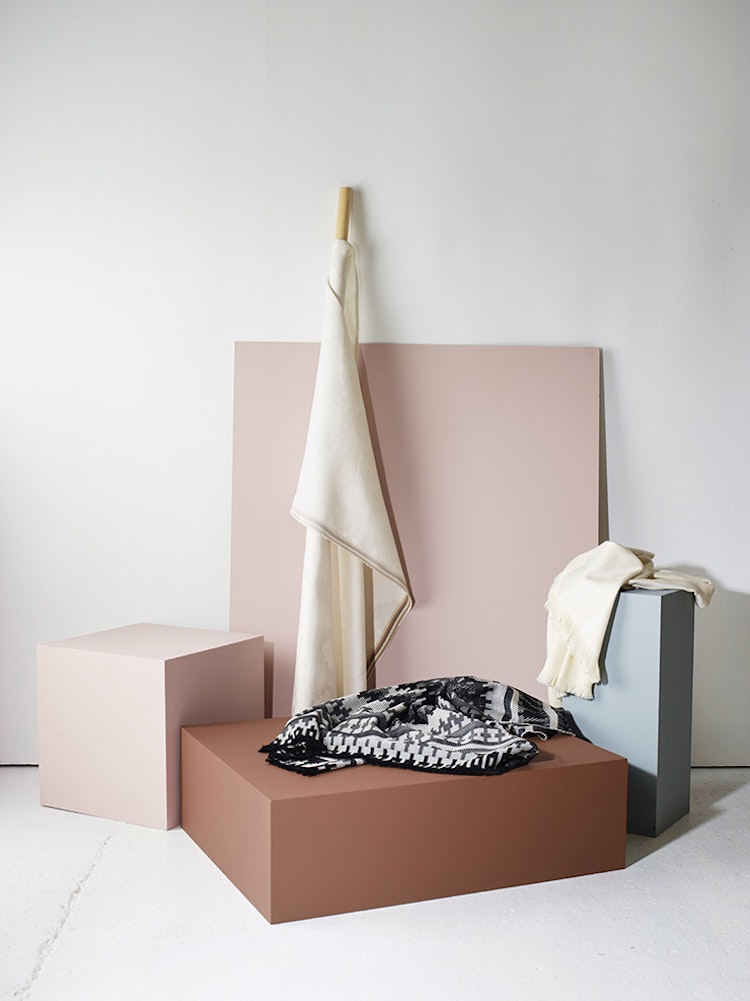
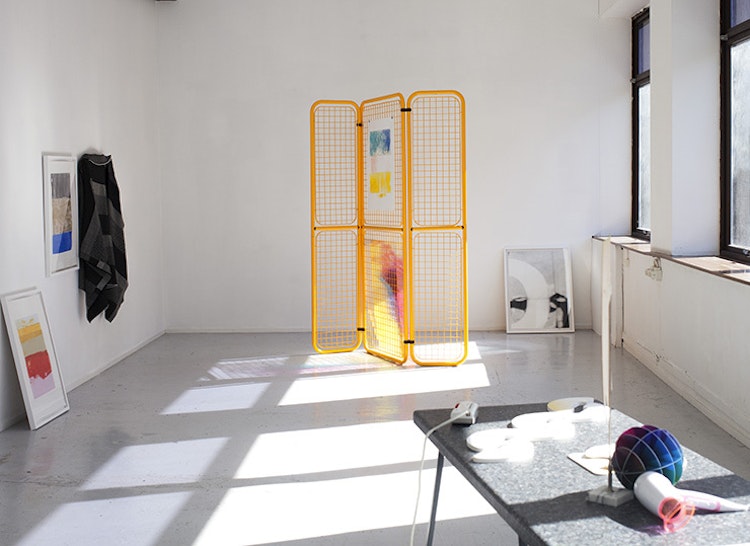
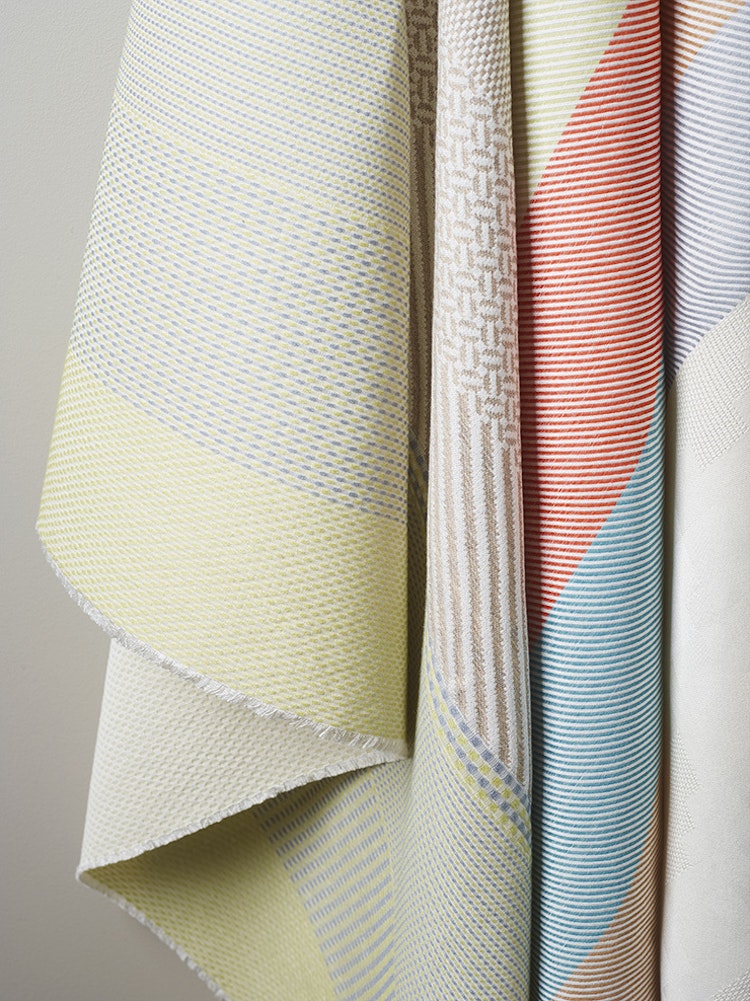
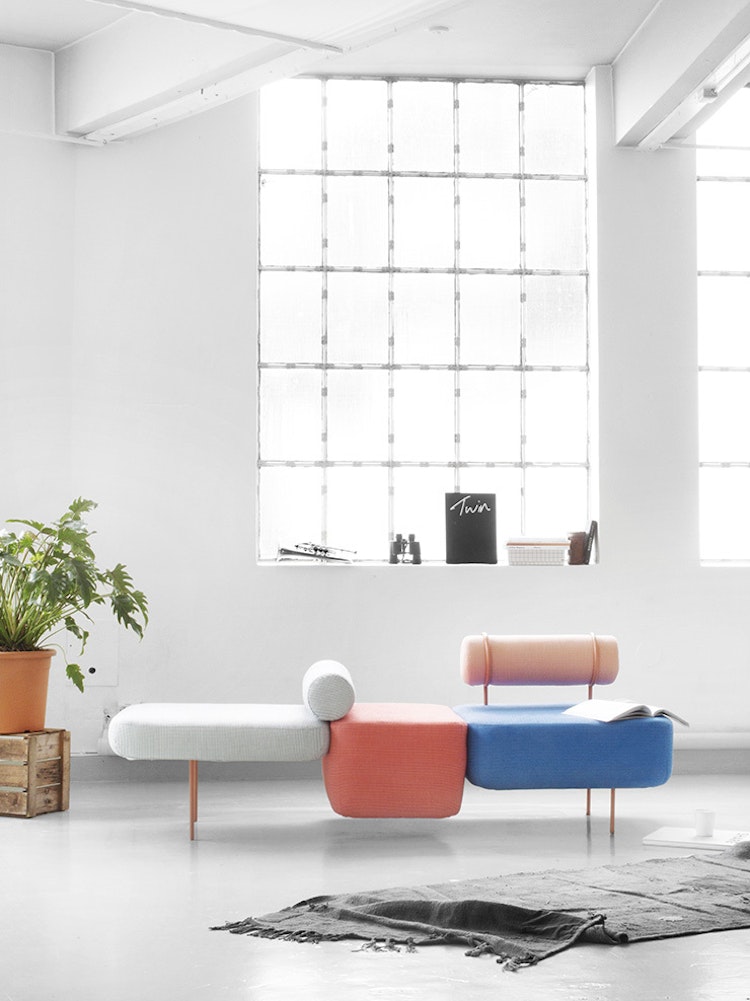
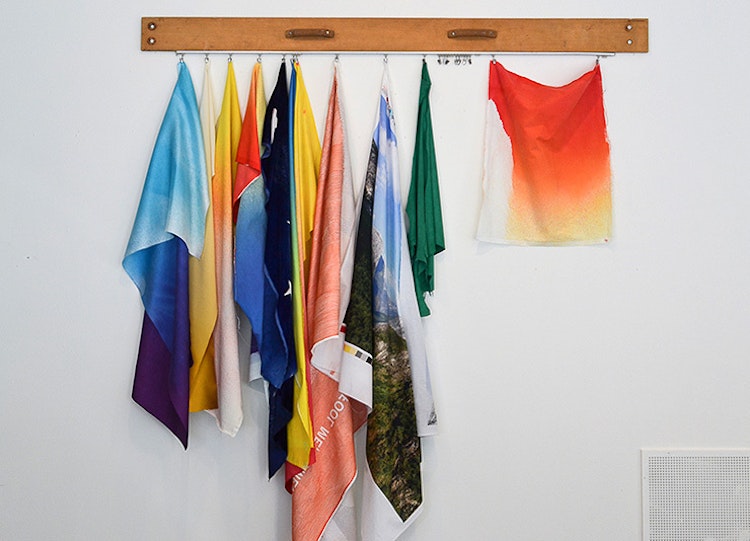
I grew up as a minority in my home country—I call Brazil my home but I’m a minority there, and then I moved and became a minority in another place
Josef and Anni Albers
Yamamoto began studying at Bergen Academy of Art and Design in 2008 and completed a master’s degree in 2013. Even while a student, he began participating in group exhibitions in Norway, Ukraine, China, Denmark and Iceland. In 2014 he held his first solo show, Conversations with Anni Albers, at SOFT Galleri in Oslo. The exhibition presented a range of woven textiles made through collaboration with several Norwegian textile factories. As the title suggests, in the exhibition Yamamoto went into a kind of artistic dialogue with textile artists Anni Albers. And it all started with his interest for colours;
'Colour has always been important for me, and at school I was introduced to the work of Josef Albers and his method for creating the illusion of colour transparency', recalls Yamamoto.
Albers (1888-1976), who taught at the Bauhaus School in Germany in the early interwar years and in 1933 joined the faculty of Black Mountain College in North Carolina, developed some of the most influential art instruction in Europe and the USA. Perhaps most well-known are his abstract paintings and the series Hommage to the Square. In the field of colour theory, his book Interaction of Colors (1966) has become profoundly significant – it is even launched as an iTunes app.
In the book Albers writes about how colour is steered by an inhering and deceptive logic. While learning about Josef Albers’s work, Yamamoto was also introduced to the art and theories of his wife Anni Albers. Also an artist, Anni worked primarily with textiles and printing:
'I become more interested in Anni Albers than in Josef. Anni made autonomous art but also things that could be used. Not mass-produced things, but she worked with the textile industry and could situate herself in different contexts', explains Yamamoto.
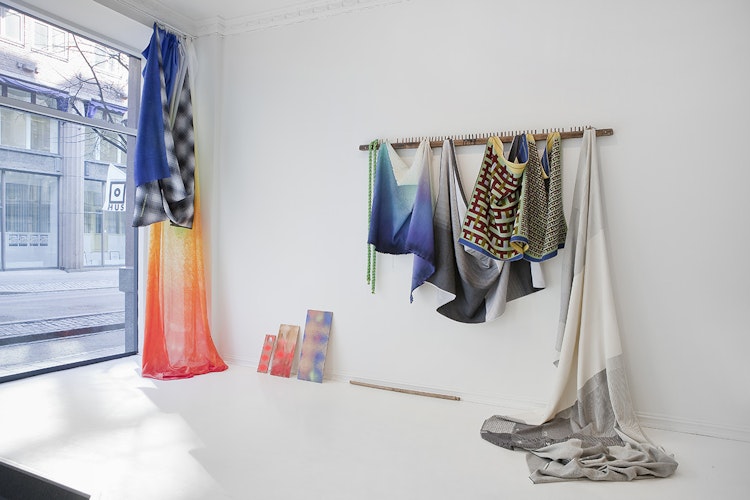
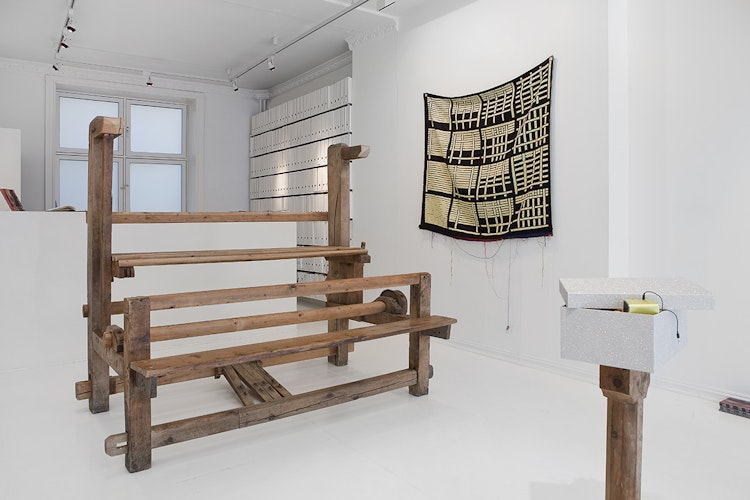
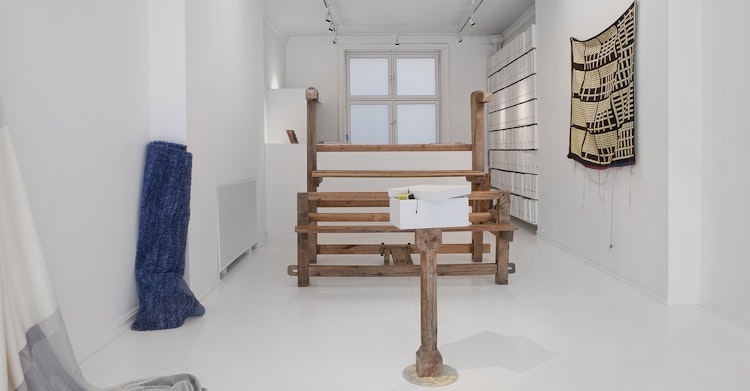
Among other things, Anni Albers put into production many works which originated from a single visual and tactile idiom. This is a practice Yamamoto strongly identifies with. Yet Anni’s mode of thinking about materials is also important for him:
'I read one of her texts, Material as Metaphor, and found much inspiration in it. Whenever I’m about to make something new, I re-read it. Anni guides me; she’s like my chief adviser.'
While working on his master’s degree, Yamamoto wrote to the Albers Foundation in New Jersey, hoping to gain more information about Anni Albers:
'I was interested in personal things, stories—in order to understand when she had written certain texts and the time when certain works were made. The staff at the Albers Foundation were very busy and couldn’t help me, so I called them. I was really provoked because Josef and Anni, during their lifetime, had been so very generous with students. Finally the foundation called me back and I was able to gain access to all Anni’s things, her private archive', says Yamamoto.
Another aspect which has been significant for Yamamoto is Anni Alber’s identity: she was a minority in the context in which she worked.
'She lived partly in the shadow of Josef and has been forgotten by many, perhaps because she was a woman. And because of being Jewish, she and her husband were compelled to immigrate to the USA.'
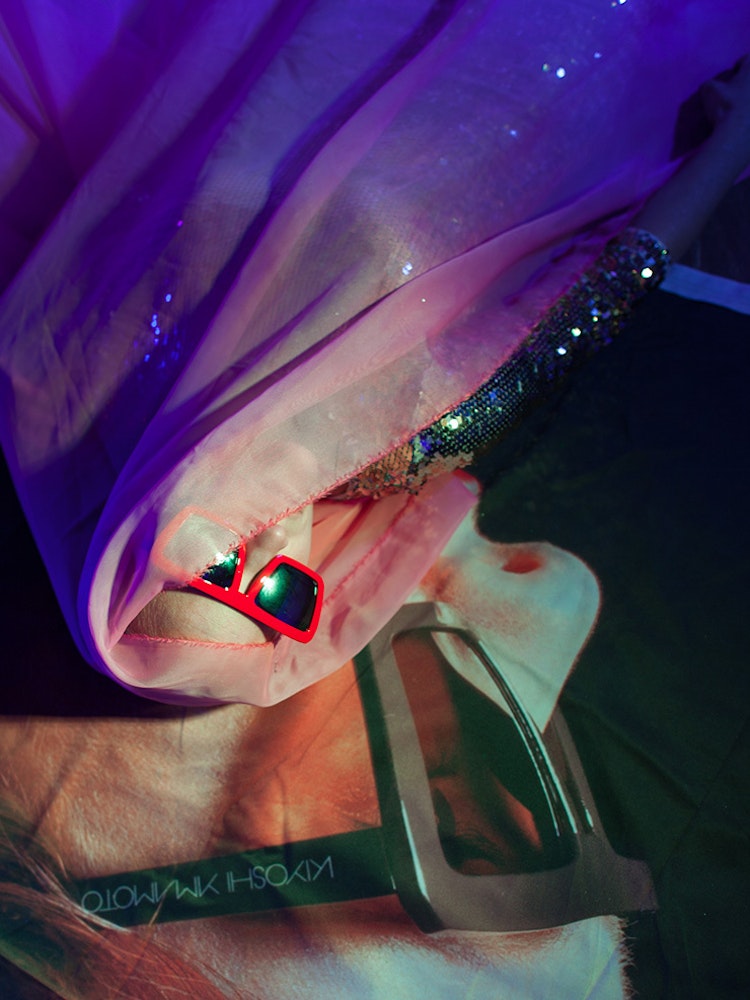
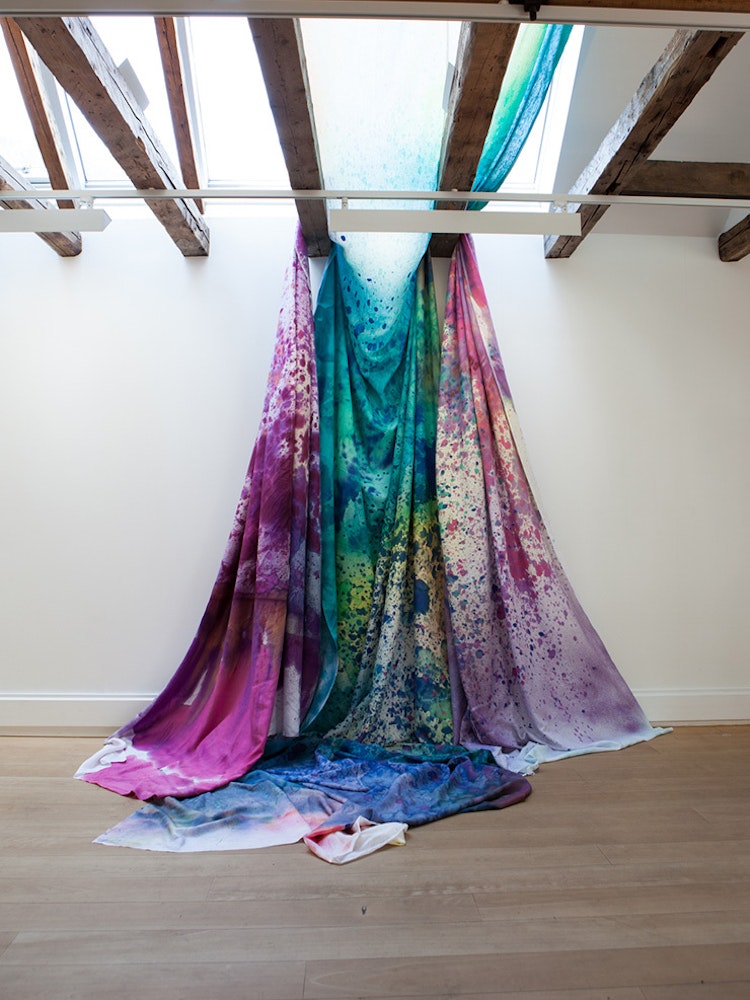
Minority in his home country
Yamamoto – a man working in a field of art dominated by women, a homosexual, and a Japanese person who grew up in Brazil – can relate to the feeling of belonging to a minority. But it is the aspects related to migration that create a link between the Albers and Yamamoto, and he thinks his personal background has a lot of bearing on his approach to art.
'I grew up as a minority in my home country—I call Brazil my home but I’m a minority there, and then I moved and became a minority in another place. This personal history of migration is like a foundational layer in my works; it’s a motivation, but perhaps it’s not all that important for viewers to know about', says Yamamoto.
To Yamamoto’s mind, the materials themselves ‘decide’ whether the works can be categorised as art or design, and this also is an idea gleaned from Anni Albers:
'If you look at my works, there’s a lot of her in them. I’m a prodigious producer and allow the materials to determine whether the works should be classified as design or art, and I have no problem with situating myself in different contexts.'
Textiles as a backdrop
The exhibition at SOFT included a rebuilt loom, and during the month it was on show the loom was used in performances in combination with an original print by Anni Albers.
'Through inspiration from Anni, I also returned to working with printing and paper, a method I hadn’t used for a while', he admits. This happened after Yamamoto visited Anni’s gallerist in London in 2014. His prints were eventually featured in an exhibition at the flagship gallery of Norske Grafikere (Norwegian printmakers’ association) in 2015. There, both he and the artist Hedvig Thorkildsen presented prints and installations.
Even when working with non-textile media, he recognises that his starting point is in textiles:
'There’s also a lot of textile expression in my prints—silkscreen on wood and paper', he explains. The work Untitled (The Grid), which was included in the exhibition at Norske Grafikere, consists of pigment on strips of veneer that were later woven together.
'And Bobby Brown Goes Down, a composition of wooden sculptures which I presented at the annual exhibition Craft 2015 (Årsutstillingen Kunsthåndverk 2015), was from a series I would describe as sketches for weavings. There’s lots of gradation there.'
Craft 2015 was the annual juried exhibition of the Norwegian Association for Arts and Crafts that was on show at the National Museum in Oslo in October and November. Yamamoto was invited to give a performance, an art form he considers a natural part of his practice:
'My performances also spring from my experience with textiles, from weaving and ironing, which are very performative and meditative practices. And sometimes it’s difficult for viewers to interpret the material; it requires contextualising objects in a way that can clarify my intended message. It’s important for me to communicate with the public, and when I see that something else, for instance a performance, is necessary for helping the public experience my work, then I use that other medium.'
Get Colorblind
The performance presented at Craft 2015 was described on the National Museum’s website as such:
'In Norway, one out of twelve men are colour blind. The goal for the project Get Colorblind is to develop an understanding of the relation between what we see and how we describe it. By using the visual languages of craft, fetishism and theatre, the artist explores the political and ideological mechanisms underlying our colour-related behavioural patterns.'
During the performance (it has been shown in several contexts), Yamamoto wheels in a tall scaffolding on which are mounted two large placards with photo-portrait of the artist and a model and the printed slogan ‘Get Colorblind’. Yamamoto wears white clothing and holds a green flag in one hand. Members of the public are then given something akin to sunglasses and are invited to wave flags of many colours – yellow, blue, red and so forth. This activity is accompanied by lively Latin American music. The goal is for the public to experience the world through the eyes of someone who is colour blind.
'I love people who are colour blind; I wish I was. They experience the world in a different way', explains Yamamoto.
'It’s so interesting with colour blind people, not least because it is us who have decided they have a handicap, that they have limited functionality. Furthermore, it’s very much based on being male or female; it’s almost only men who are colour blind.'
The Get Colorblind project began when Yamamoto discovered that the exhibition where his master’s degree project would be on show would be held at Bergen Kunsthall. He began finding out more about the venue and learned that Norway’s Association for the Blind had its offices on the second floor of the building. Even though colour blindness has nothing to do with actual blindness, he thought it would be interesting to suggest a connection.
'The performance is a kind of parody. I wanted to do a colour perception test, since there can be so many inconsistencies in testing for colour blindness. A lot depends on what kind of paper the colour is on, the testing situation and the lighting in the room', he explains.
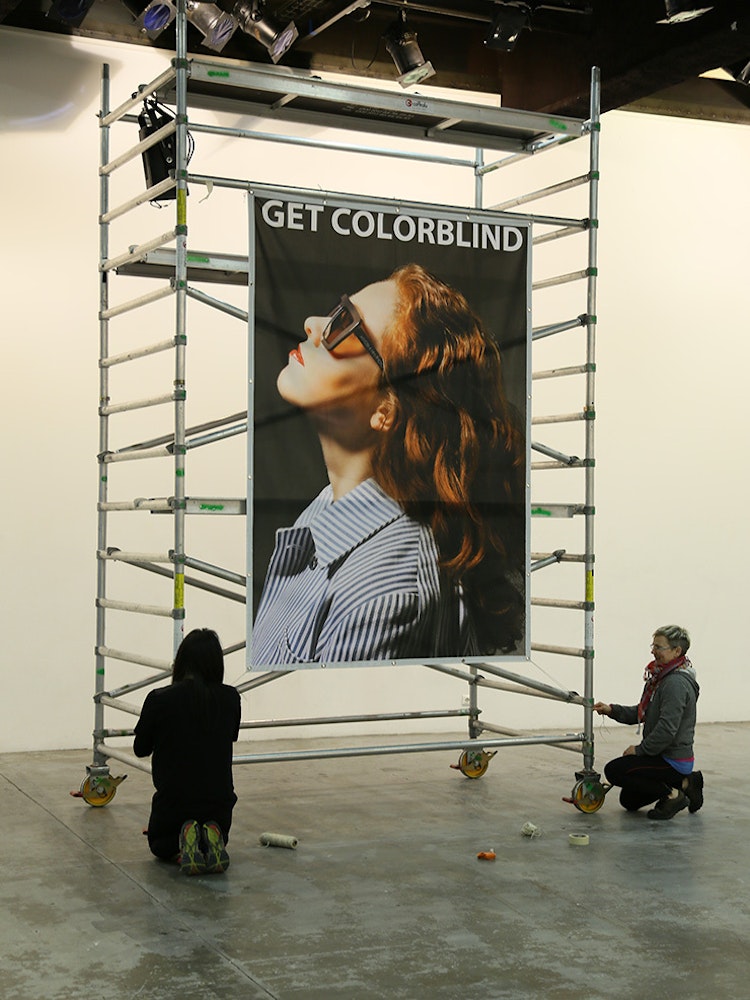
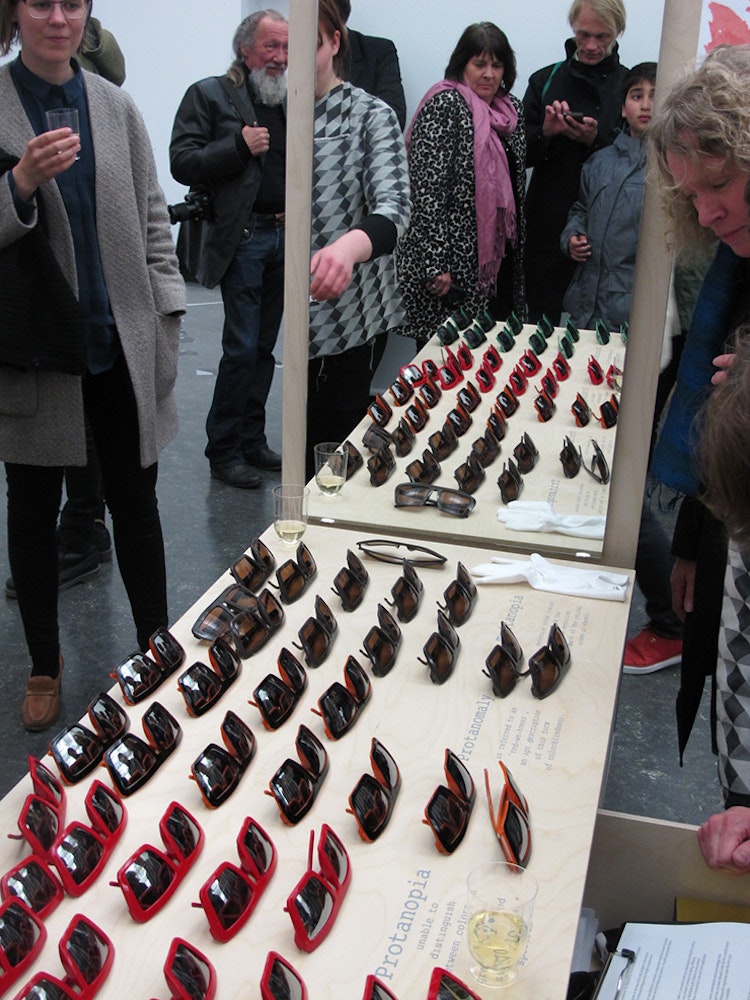
Material as metaphor
To create a colour perception test is, for Yamamoto, the first stage of creating a new work of art. After selecting colours he finds forms to fit them (usually they are geometrical rather than organic), and then it’s up to the materials to decide whether the work becomes art or design. This way of thinking is also inspired by Anni Albers:
'If I work with weaving, then it’s the material that decides whether it will be an art or a design object. Then I decide how to categorise it after I’ve finished weaving, by finding out what needs the material has.'
Yamamoto has for several years created textile works that have been included in the design exhibitions like 100% Norway in London. In 2015 he presented a textile collection made of Norwegian wool and Brazilian silk. The webpage for 100% Norway says the following about Yamamoto:
'His work combines the Japanese tradition of fine craftsmanship with the Brazilian love of colour.'
The works in the series Unconscious (Material as Metaphor) are prototypes for blankets or shawls.
'I’m very interested in functionality and in how people can become preoccupied with one thing. I don’t like mass-production much, it frightens me a bit, but I like small scale manufacture.'
In saying this, he again points to inspiration from Anni Albers:
'If I make an object with a surface that would be suitable for a floor carpet, then I have no problem with that. But clearly, I need to be deliberate about it when I put it in another context.'
When working on the Unconscious project, he knew he wanted to use silk. He soon learned that Brazil is the second largest producer of silk in the world (after China). He could therefore, through his choice of materials, combine his Brazilian background with his current situation in Norway.
'Japanese migrants took silkworms from China to Brazil. And it worked well for me to combine something Brazilian with something Norwegian', he explains.
In April Yamamoto will join other craft artists and designers in presenting the exhibition Structure in Milan. There he will exhibit woven textiles made with linen and silk:
'For the Milan show I’ve made a tablecloth… This is the first time I’ve made something not directly related to the body. And I went through a long process before coming to the realisation that this weaving was going to be a tablecloth, not a blanket or shawl', he concludes.



